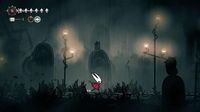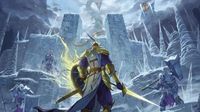After more than six years of anticipation, delays, and mounting fan expectations, the long-awaited sequel to one of indie gaming’s most beloved titles has finally arrived. Hollow Knight: Silksong, developed by the small Australian studio Team Cherry, launched on September 4, 2025, across all major consoles at a remarkably modest price of $20. The release, which had become something of a meme in gaming circles due to its protracted development cycle and sparse updates, sent shockwaves through the industry and, almost literally, broke the internet as hundreds of thousands of eager fans flooded digital storefronts, causing widespread crashes (as reported by The Daily Campus).
The feverish excitement surrounding Silksong was not unfounded. Its predecessor, Hollow Knight, had set a high bar with its atmospheric world, challenging gameplay, and intricate lore. This time, players step into the shoes—or rather, the nimble legs—of Hornet, a character familiar to fans of the original. Unlike the silent protagonist of the first game, Hornet offers her own perspective, thoughts, and motivations, guiding players through the mysterious and perilous kingdom of Pharloom after being abducted from Hallownest by unknown forces.
Pharloom itself is a marvel of design. According to Gamereactor UK, the environments range from lush, fairytale-like greenery to somber, decaying cities, each hand-painted with a level of detail that invites players to pause and simply admire the scenery. The game’s visual artistry doesn’t stop at backgrounds—every sprite, from fearsome bosses to quirky non-playable characters (NPCs), is crafted with a blend of charm and menace, incorporating motifs like bells, wings, and needles that keep the world feeling both familiar and unsettling.
But it’s not just the visuals that have critics raving. The soundtrack, once again composed by Christopher Larkin, weaves together melancholic strings, anxious piano, and bombastic brass to create a soundscape that’s as dynamic as the gameplay itself. As Gamereactor UK notes, the music shifts seamlessly from subdued raindrops in abandoned cities to thunderous orchestral crescendos during boss encounters, enhancing the emotional impact of every moment.
Speaking of bosses, Silksong has taken the series’ reputation for challenging combat to new heights. The game introduces a revamped healing system powered by silk, adjusted aerial attack trajectories, and a more complex tool system that lets players craft deadly mechanisms using collectibles. The combat is deeper and more varied than ever, but also less forgiving. Enemies—including regular mobs and bosses—deal double damage compared to the original, and Pharloom’s currency, Rosaries, is much harder to come by. As The Daily Campus points out, this can make early exploration feel punishing, with even minor missteps leading to significant setbacks. Yet, as players unlock new abilities and adapt to the game’s rhythms, the challenge becomes more manageable and, ultimately, more rewarding.
One of the most celebrated additions is the side quest system, dubbed “Wishes.” Scattered throughout Pharloom, players can pick up a variety of objectives from eccentric NPCs or notice boards in settlements. These range from tracking down missing characters to hunting rare enemies, and while some are essential for story progression, most offer valuable rewards like new abilities or much-needed Rosaries. This system adds layers of depth and replayability, encouraging players to immerse themselves in every corner of the kingdom.
Notably, Silksong manages to make its story more accessible than its famously cryptic predecessor. With Hornet as a vocal protagonist, players gain clearer insight into the game’s narrative and character motivations. The approach, reminiscent of the narrative style in Dark Souls but less opaque, helps fans follow the story without resorting to YouTube explainers or fan forums. As Gamereactor UK observes, this shift may not please purists, but it provides a refreshing clarity that broadens the game’s appeal.
The industry impact of Silksong’s release was immediate and dramatic. Most indie studios with planned September launches, including titles like Demonschool, Baby Steps, and Little Witch in the Woods, hastily rescheduled their releases to avoid competing with the juggernaut. Only Atari’s Adventure of Samsara, a 2D Metroidvania by Brazilian indie studio Ilex Games, dared to launch on the same day. The results were stark: while Silksong enjoyed over half a million simultaneous players within hours, Samsara peaked at just 12 concurrent players, despite positive reviews and solid gameplay. As Rock Paper Shotgun lamented, the lack of promotion and unfortunate timing may have doomed an otherwise worthy title to obscurity.
Critical reception for Silksong has been overwhelmingly positive. The Daily Campus awarded it a near-perfect 4.75 out of 5, praising its ambitious world-building, inventive combat, and immersive side content. Gamereactor UK went even further, bestowing a rare 10 out of 10 and declaring, “Hollow Knight: Silksong is a masterpiece, simply put. No question about it.” The review lauded the game’s “wonderful design, fair challenge, excellent exploration, phenomenal soundscape, tight game controls, and lots of content.”
That said, Silksong is not without its caveats. Its steep difficulty curve, particularly in the early hours, may discourage more casual players. The scarcity of Rosaries and punishing enemy attacks can make progress feel hard-won, especially for those new to the genre. However, for fans of challenging Metroidvania games, these obstacles are part and parcel of the experience, and overcoming them is precisely what makes the game so satisfying.
Perhaps most remarkable is how Team Cherry, a small indie studio, managed to not only meet but exceed the sky-high expectations set by years of hype. Eschewing the industry trend of massive marketing campaigns and influencer partnerships, the developers let their work speak for itself—launching Silksong at a price point that many consider a steal, and with no advance reviews or flashy PR stunts. The result? A game that stands as a testament to the power of vision, patience, and an unwavering commitment to quality.
For those who have waited, speculated, and sometimes despaired over the fate of Silksong, the answer to the question that has echoed for years—“Was it worth the wait?”—is a resounding yes. The game delivers an experience that is both familiar and refreshingly new, challenging and fair, beautiful and haunting. In a year crowded with releases, Hollow Knight: Silksong has not only lived up to the legend of its predecessor but carved out its own place in gaming history.

